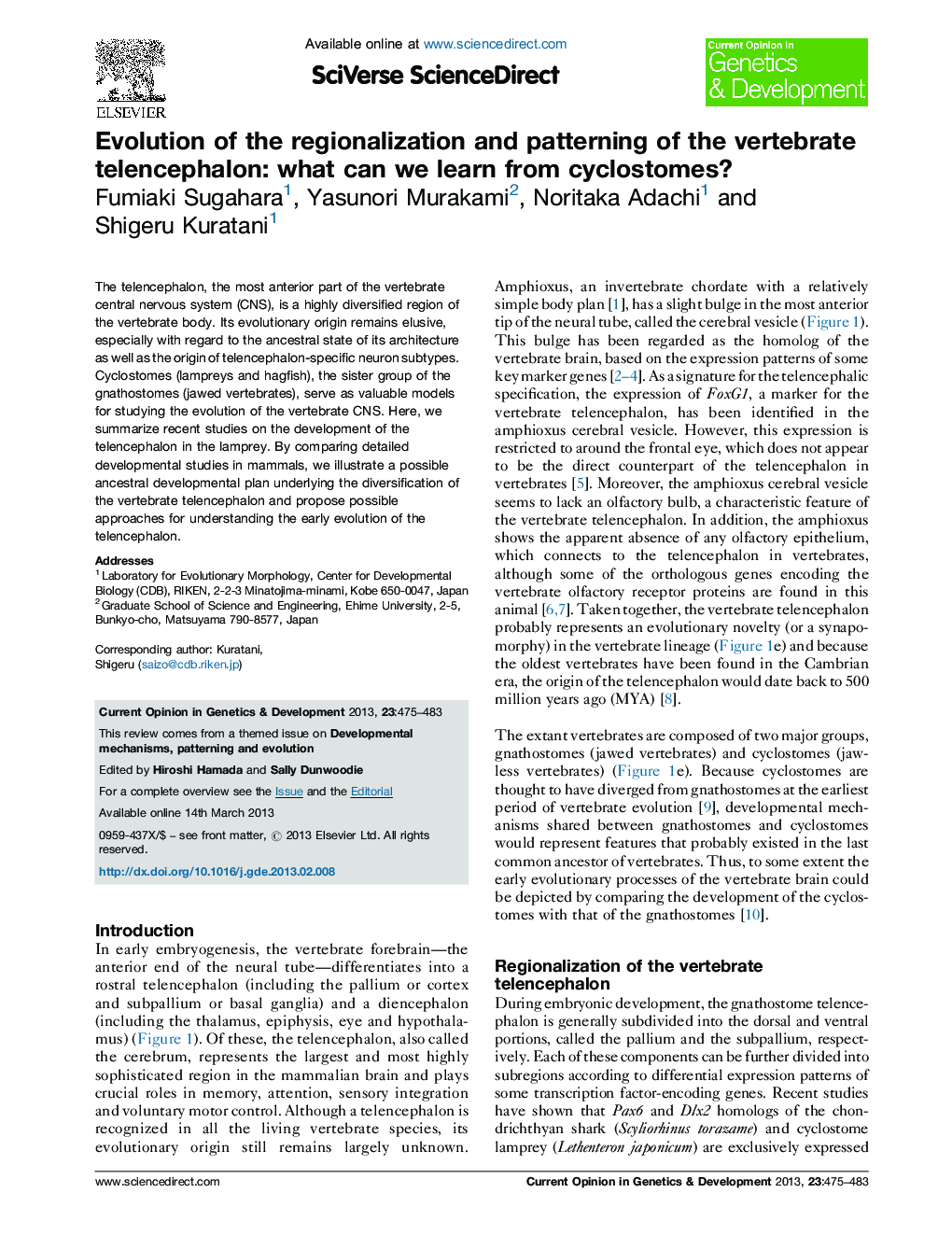| Article ID | Journal | Published Year | Pages | File Type |
|---|---|---|---|---|
| 2784846 | Current Opinion in Genetics & Development | 2013 | 9 Pages |
The telencephalon, the most anterior part of the vertebrate central nervous system (CNS), is a highly diversified region of the vertebrate body. Its evolutionary origin remains elusive, especially with regard to the ancestral state of its architecture as well as the origin of telencephalon-specific neuron subtypes. Cyclostomes (lampreys and hagfish), the sister group of the gnathostomes (jawed vertebrates), serve as valuable models for studying the evolution of the vertebrate CNS. Here, we summarize recent studies on the development of the telencephalon in the lamprey. By comparing detailed developmental studies in mammals, we illustrate a possible ancestral developmental plan underlying the diversification of the vertebrate telencephalon and propose possible approaches for understanding the early evolution of the telencephalon.
